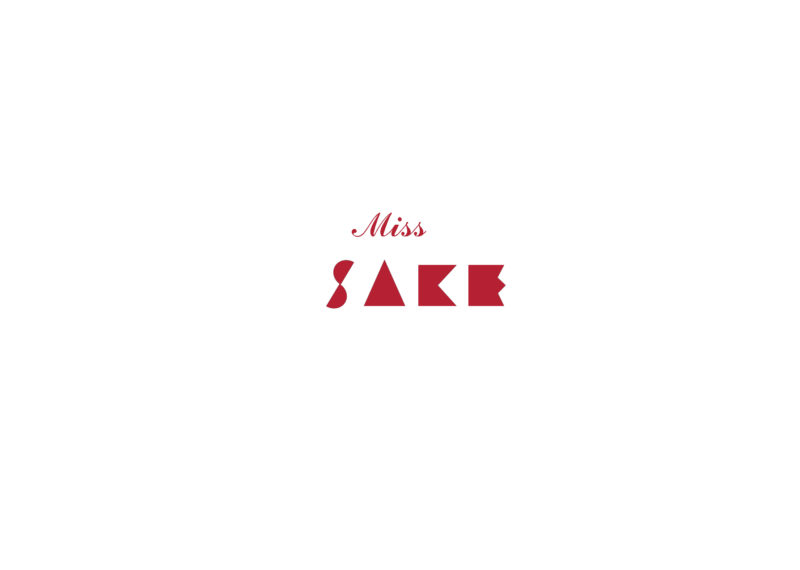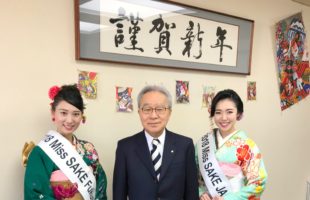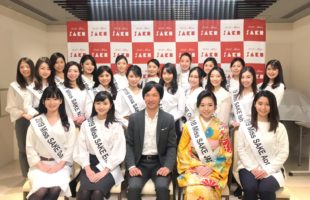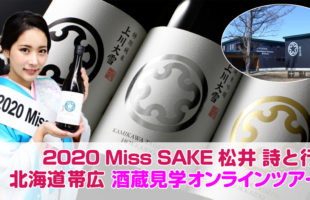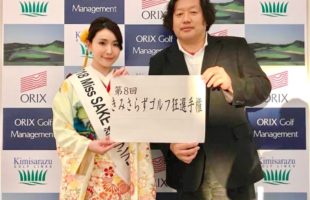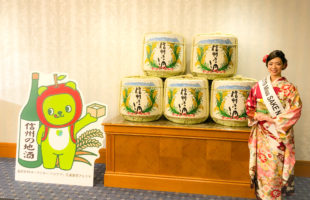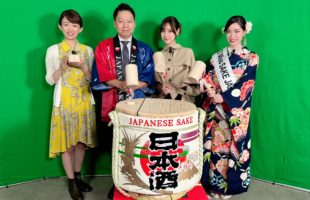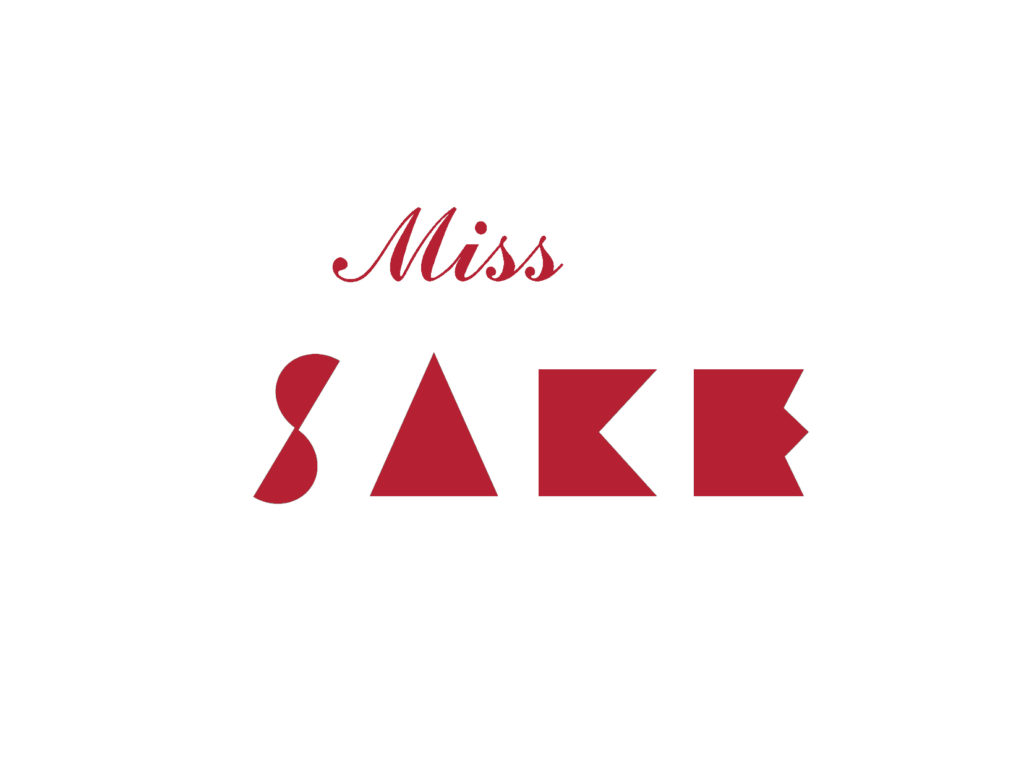今回のテーマは、『日本酒の様々な名称とそれぞれの特徴』。
以前、Unit.4『日本酒の分類』で大吟醸・純米吟醸・醸造酒などの特定名称酒の分類の仕方についてご紹介させて頂きました。しかし日本酒には、それだけでなく、生酒・にごり酒・古酒などのように、製造方法の違いや出荷時の状態別にさらに種類を分けることができます。今回は、日本酒の様々な名称とそれぞれの種類の特徴についてご紹介したいと思います。
以下に、本日学んだ日本酒の楽しみ方の日英対訳を記述させて頂きます。
英会話レッスンテーマ『日本酒の様々な名称とそれぞれの特徴(The Various Terminologies of SAKE and Each Characteristics)』日英対訳
Unit 7. 日本酒の様々な名称とそれぞれの特徴
ラベルに記載されている、様々な日本酒の名称をその特徴と共にご紹介します。
①生酒
製造工程で一度も火入れ(加熱処理)をしない日本酒を指します。発酵を止める目的もある火入れをしていないので、貯蔵中も瓶に詰めてからも発酵が進みます。そのため、香りや味わいが安定していないのも生酒の特徴になります。
火入れをしていない分品質がとてもデリケートなため、冬の寒い時期を除き、基本的には冷蔵保存かつ、なるべく早くお召し上がり頂く必要があります。生酒はお酒が本来持っているフレッシュでフルーティな味わいを楽しんで頂けます。
②生貯蔵酒
搾りたての日本酒をそのまま低温で貯蔵し、出荷時に一度だけ火入れをした日本酒を指します。フレッシュな生酒に最も近い味わいがあります。
③生詰酒
お酒を搾った直後に火入れ(加熱殺菌)を行い、出荷時(瓶詰め時)には火入れを行わない日本酒を指します。通常日本酒は搾った後と出荷時の2度火入れを行いますが、生詰酒は搾った直後の1度のみです。
代表的な生詰酒には、各蔵元から秋頃に出荷される「ひやおろし」があります。
④原酒
市販されている多くの日本酒は、割水といって味わいや香り、アルコール分を調整するために水を加えますが、原酒はこの割水作業を行わない、水を加えていないアルコール度数が高い日本酒を指します。
一般的に、加水した日本酒がアルコール度数15%前後なのに対し、「原酒」は20%前後と、高めの度数になっています。原酒は味わいが強いため、氷を入れてロックで頂くのがオススメです。氷が溶け、程よくアルコール度数が下がりながらも味わいはしっかり。ぜひお試しください。
⑤あらばしり
もろみを絞る時の最初の部分の酒を指します。一般的に澱が多く、香り高く、アルコール度数は低めです。雑味なども感じられる荒々しい風味が特徴です。
⑥中汲み
あらばしりに続いて流れ出る部分の酒を指します。酒の濁りがなく透明度が高く、味香りともバランスが取れたお酒です。
⑦にごり酒
もろみを目の粗い布で漉した白く濁っている日本酒を指します。白濁した部分を「澱」と言いますが、あえて澱を多く含んだにごり酒は素材の味を活かしたお酒で、日本酒本来の米の旨味を強く感じることができます。
また、にごり酒には火入れ処理を行わず、酵母が生きたままの状態で瓶詰めされているものもございます。その分、酒質が変わりやすいものも多いため、開栓後はなるべく早く飲み切ることをオススメします。
にごり酒は「澱」の部分が底に溜まっているので、基本的には瓶をゆっくり傾けながら、「澱」をよく混ぜあわせて飲みます。あえて混ぜあわせずに、「澱」が下に溜まった状態で透き通った上澄みの部分だけを楽しむのもにごり酒の楽しみ方の1つです。濁り部分と上澄み部分で2種類の味を楽しむことができます。
⑧スパークリング酒
炭酸ガスを含む日本酒を指します。アルコール度数が低く甘口のものが多いため、女性や日本酒を飲み慣れていない方にオススメです。日本酒は醸造酒ですが、製造過程でお米のデンプンが工事の酵素の働きで糖に、そして糖が酵母の働きによって二酸化炭素とアルコールに変化します。この製造方法を活かしてスパークリング酒は造られます。
発泡性日本酒には3つの分類があります。
1. 瓶内二次発酵方式
これはアルコール発酵が止まっていない醪を火入れなどを行わない「生」の状態で瓶詰めしたものです。瓶内でさらに発酵を進めて炭酸ガスを瓶内に閉じ込める方法です。
2. 炭酸ガス注入方式
出来上がった日本酒に人工的に炭酸ガスを加えることによってできる発泡日本酒です。
3.活性にごり酒
粗く濾過し、もろみの菌が生きており発酵がまだ続いている状態で瓶に詰めたものを指します。もともとの発酵力を利用してシュワシュワ感を出しています。粗い濾過のため、お酒はにごっていてドロドロとした口当たりです。
⑨古酒
熟成させた日本酒を古酒と呼びます。日本酒の古酒は熟成によって、新酒のときとはまったく違う味わいに変化します。新酒とのもっとも大きな違いは、「熟成香」と呼ばれるナッツやドライフルーツを連想させる特徴的な香りと、琥珀色ともいえる「色」です。口当たりはまろやかで、甘く深みのある香りとコクのある味わいが楽しめます。
⑩新酒
日本酒の製造年月度は毎年7月から翌年6月と定められており、その年度内に出荷されたものを指します。
⑪冷やおろし
一度火入れをした後、秋まで貯蔵し、二度目の火入れをしないで出荷される酒のことを指します。ひやおろしは夏の間寝かせてあるため、時間によって程よく熟成が行われています。そのため、絞りたての際の粗さが取れ、味わいにまろやかな丸みが出て、深い味わいを楽しめるのが「ひやおろし」の特徴です。
⑫生酛
自然に発生する乳酸菌で酵母を増やす伝統的な酒母の造り方でできた日本酒を指します。複雑味があり濃醇な味わいが特徴です。味わいや香りにより深みの出る、熱燗がオススメです。
⑬山廃酛
生酛の製造工程から、米や米麹をすり潰す「山卸し」という工程を除いて造られたお酒を指します。山卸しは、冬の寒い時期に深夜から早朝にかけて1日に何度も酒米をかき回し、すり潰さなければならない重労働です。味わいは生酛のように、しっかりとした重みのある味わいが特徴です。
⑭貴醸酒
製造工程で加えられる仕込み水の代わりに、日本酒で仕込んだ酒のことを指します。甘く濃厚な味わいが特徴です。
【英訳】Unit 7. The Various Terminologies of SAKE and Each Characteristics
①Namazake
We call unpasteurized sake Namasake. Brewers pasteurize sake in order to stabilize its quality and halt fermentation. For this type of sake, However, brewers do not conduct pasteurization, and that allows fermentation to proceed during storage and after bottling too. So, compared to pasteurized sake, this kinds of sake has unstable shelf-life. Therefore, you should drink it as soon as possible after you buy it, keep in mind it always needs to be chilled. This kinds of sake is not pasteurized, so you can enjoy its fresh taste.
②Nama-chozo-shu
Freshly pressed sake is stored at low temperatures, and is pasteurized only once, just before shipping. This sake retains the flavors of unpasteurized sake.
③Nama-zume-shu
This sake is pasteurized immediately after being pressed. Then, this kind of sake is stored, and moderately matured for a stable product quality. The matured sake is then bottled without a second pasteurization. Generally, Japanese sake is pasteurized twice: after being pressed and before shipping. However, Nama-zume-shu is pasteurized once, only after it is pressed.
④Genshu
Most sake on the market has had its alcohol content adjusted to around 15-16% through dilution with water, but since genshu is undiluted sake, its alcohol content is often quite high, at 18-20%.
⑤Arabashiri
This refers to the very first part of the sake that comes off the press when the moromi is pressed. It contains a few particles and relatively less amounts of alcohol. Its appeal is in the freshly fermented and pleasantly stimulating carbon dioxide.
⑥Nakagumi
This refers to the middle part of the sake that comes off the press when the moromi is pressed. This part of sake is colorless and has well balanced aroma and taste.
⑦Nigorizake (Cloudy Sake)
This a white, cloudy sake made by straining the moromi through a coarse cloth only. You can enjoy the flavor and taste rice originally has. Nigorizake is shipped without pasteurization, so it still contains living yeast and enzymes. This kind of sake has short storage life with quick change in flavor, so I recommend you have it as soon as possible. White dregs settle to the bottom of the bottle. When you drink Nigorizake, generally you shake the bottle gently and mix up the dregs. Or, another way to enjoy it is not shaking the bottle and having only the clear part of Nigorizake.
⑧Sparkling sake
This is a sake that contains a lot of carbon dioxide. There are many kinds of sparkling sake. They contain less alcohol and some of them are sweet, so this is recommended to women and those who are unfamiliar with sake.
⑨Koshu (Long-term storage and aged sake)
We call matured sake Koshu. Koshu tastes completely different from new sake. The biggest differences between Koshu and new sake are a unique aroma like nuts and dry fruits and its gold color. Koshu has smooth taste and a sweet and rich flavor.
⑩Shinshu (New sake)
This means “new sake” and refers to sake that was just freshly released by a brewery.
⑪Hiya-Oroshi
This sake has been pasteurized once and stored until fall, and is then shipped without a second pasteulization. Hiya-Oroshi is stored for a while, so it is matured well depending on its storage time. You can enjoy its mild taste and deep flavor.
⑫Kimoto
Kimoto describes a style of sake that uses the original yeast starter method. The yeast starter for Kimoto sake is rhythmically mixed using long paddles to combine yeast, water rice and koji into a starter mash that naturally promotes lactic acid development. Sake made through this method is known for a robust and sometimes funky flavors.
⑬Yamahai
Yamahai is a yeast starter method that was developed after Kimoto, but before Sokujo. Yamahai allows for natural lactic acid production, but does away with the need for “Yamaoroshi” or the labor intensive macerating/mashing of the yeast starter using long wooden poles as has been done for centuries in the kimoto method. Yamahai flavor profiles tend to be full bodied and funky.
⑭Kijoshu
This sake is made with sake as a base ingredient in place of water. This type of sake has dense and sweet taste and has been prized since ancient times.
英語独特の表現を意識する
今回のレッスンでの一番の気づきは、「英語独特の表現を意識する」ということです。
今回は、さまざまな種類の日本酒を紹介する練習をさせて頂きました。日本語・英語の双方ににおいて当てはまることですが、書き言葉と話し言葉は少し表現が異なります。例えば、①生酒から②生詰酒に話題を移すとき、書き言葉では箇条書きにすればよいだけですが、口頭で説明する際には「次に〇〇についてご説明させて頂きます。」のような説明文を挟む必要があります。Gaba様のレッスンでは、毎度書き言葉と話し言葉それぞれの表現を教えて頂いています。
私はいつも“Let me tell you~” の表現を使っていましたが、英語は同じ表現を繰り返すことを避けるため、いくつかの表現を教えて頂きました。
その中でも一番印象に残っているのが、“Last but not least”です。この表現の中のnot leastの意味は“not the least important”という意味で、表現全体を日本語の諺に直訳すると、「残り物には福がある」です。つまり、「最後に述べるが決して軽んずべきものではない」ということです。日本語にすると語彙が少し長くなり、あまり用いない言葉ですが、英語に直すと単語が全てtで終わっており、音のリズムやまとまりが非常によく、アメリカらしい表現になります。
日本語の文章をただ直訳するだけでは、英語話者にうまく伝わらないことが多々あります。Gaba様でのレッスンを重ね、よりネイティブスピーカーに近い表現、言葉遣いを習得できるよう引き続き頑張りたいと思います。
Gaba様、この度は素晴らしいレッスンを誠にありがとうございました。
*他のレッスン様子は以下よりご覧いただけます。
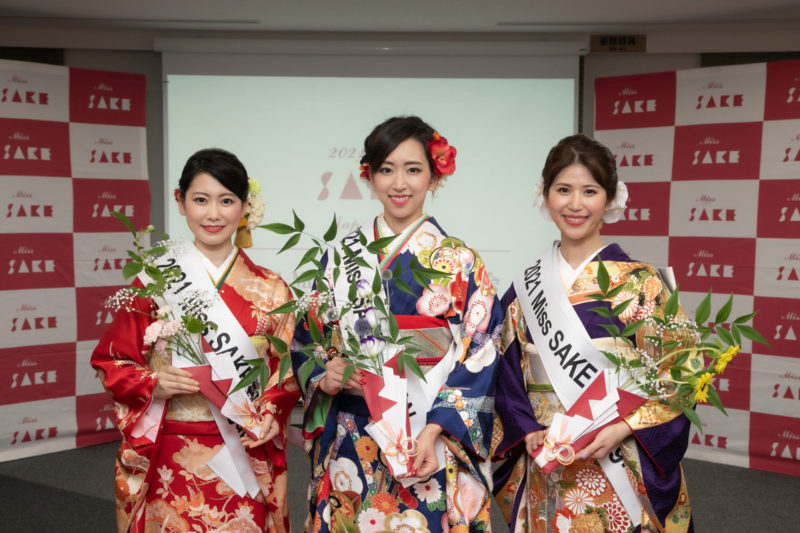
英会話Gaba × Miss SAKE Miss SAKE(ミス日本酒)にご協力を頂いている企業様の中に、以前よりご協力いただいている「英会話のGaba」様がございます。 過去には英語を学びながら、ミス日本酒と日本酒を愉しむ「日本酒女子会 in English」も開催させていただいております...
英会話Gaba × Miss SAKE Miss SAKE(ミス日本酒)にご協力を頂いている企業様の中に、以前よりご協力いただいている「英会話のGaba」様がございます。 過去には英語を学びながら、ミス日本酒と日本酒を愉しむ「日本酒女子会 in English」も開催させていただいております...
The theme for this time was “The Various Terminologies of SAKE and Each Characteristics”
[for English Speakers]
The theme for this time was “The Various Terminologies of SAKE and Each Characteristics”.
I described the explanations of the various kinds of sake that I learned this time below.
Unit 7. The Various Terminologies of SAKE and Each Characteristics
①Namazake
We call unpasteurized sake Namasake. Brewers pasteurize sake in order to stabilize its quality and halt fermentation. For this type of sake, However, brewers do not conduct pasteurization, and that allows fermentation to proceed during storage and after bottling too. So, compared to pasteurized sake, this kinds of sake has unstable shelf-life. Therefore, you should drink it as soon as possible after you buy it, keep it mind it always needs to be chilled. This kinds of sake is not pasteurized, so you can enjoy its fresh taste.
②Nama-chozo-shu
Freshly pressed sake is stored at low temperatures, and is pasteurized only once, just before shipping. This sake retains the flavors of unpasteurized sake.
③Nama-zume-shu
This sake is pasteurized immediately after being pressed, Then, this kind of sake is stored, and moderately matured for a stable product quality. The matured sake is then bottled without a second pasteurization. Generally, Japanese sake is pasteurized twice: after being pressed and before shipping. However, Nama-zume-shu is pasteurized once, only after it is pressed.
④Genshu
Most sake on the market has had its alcohol content adjusted to around 15-16% through dilution with water, but since genshu is undiluted sake, its alcohol content is often quite high, at 18-20%.
⑤Arabashiri
This refers to the very first part of the sake that comes off the press when the moromi is pressed. It contains a few particles and relatively less amounts of alcohol. Its appeal is in the freshly fermented and pleasantly stimulating carbon dioxide.
⑥Nakagumi
This refers to the middle part of the sake that comes off the press when the moromi is pressed. This part of sake is colorless and has well balanced aroma and taste.
⑦Nigorizake (Cloudy Sake)
This a white, cloudy sake made by straining the moromi through a coarse cloth only. You can enjoy the flavor and taste rice originally has. Nigorizake is shipped without pasteurization, so it still contains living yeast and enzymes. This kind of sake has short storage life with quick change in flavor, so I recommend you have it as soon as possible. White dregs settle to the bottom of the bottle. When you drink Nigorizake, generally you shake the bottle gently and mix up the dregs. Or, another way to enjoy it is not shaking the bottle and having only the clear part of Nigorizake.
⑧Sparkling sake
This is a sake that contains a lot of carbon dioxide. There are many kinds of sparkling sake. They contain less alcohol and some of them are sweet, so this is recommended to women and those who are unfamiliar with sake.
⑨Koshu (Long-term storage and aged sake)
We call matured sake Koshu. Koshu tastes completely different from new sake. The biggest differences between Koshu and new sake are a unique aroma like nuts and dry fruits and its gold color. Koshu has smooth taste and a sweet and rich flavor.
⑩Shinshu (New sake)
This means “new sake” and refers to sake that was just freshly released by a brewery.
⑪Hiya-Oroshi
This sake has been pasteurized once and stored until fall, and is then shipped without a second pasteulization. Hiya-Oroshi is stored for a while, so it is matured well depending on its storage time. You can enjoy its mild taste and deep flavor.
⑫Kimoto
Kimoto describes a style of sake that uses the original yeast starter method. The yeast starter for Kimoto sake is rhythmically mixed using long paddles to combine yeast, water rice and koji into a starter mash that naturally promotes lactic acid development. Sake made through this method is known for a robust and sometimes funky flavors.
⑬Yamahai
Yamahai is a yeast starter method that was developed after Kimoto, but before Sokujo. Yamahai allows for natural lactic acid production, but does away with the need for “Yamaoroshi” or the labor intensive macerating/mashing of the yeast starter using long wooden poles as has been done for centuries in the kimoto method. Yamahai flavor profiles tend to be full bodied and funky.
⑭Kijoshu
This sake is made with sake as a base ingredient in place of water. This type of sake has dense and sweet taste and has been prized since ancient times.
The theme for the next lesson is “classification by taste and flavor”.
I will work hard to absorb many things in the next lesson.
GABA, thank you very much for this wonderful lesson.
*他のレッスン様子は以下よりご覧いただけます。

英会話Gaba × Miss SAKE Miss SAKE(ミス日本酒)にご協力を頂いている企業様の中に、以前よりご協力いただいている「英会話のGaba」様がございます。 過去には英語を学びながら、ミス日本酒と日本酒を愉しむ「日本酒女子会 in English」も開催させていただいております...
英会話Gaba × Miss SAKE Miss SAKE(ミス日本酒)にご協力を頂いている企業様の中に、以前よりご協力いただいている「英会話のGaba」様がございます。 過去には英語を学びながら、ミス日本酒と日本酒を愉しむ「日本酒女子会 in English」も開催させていただいております...

